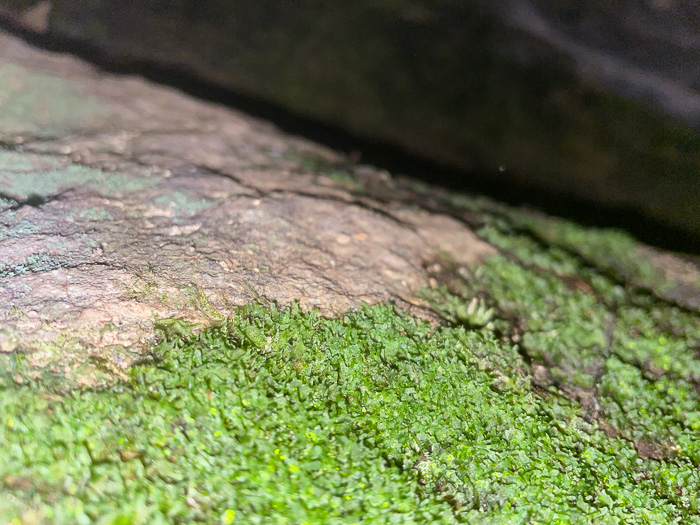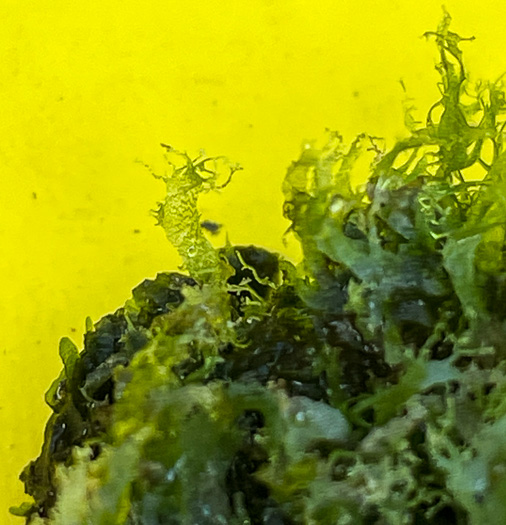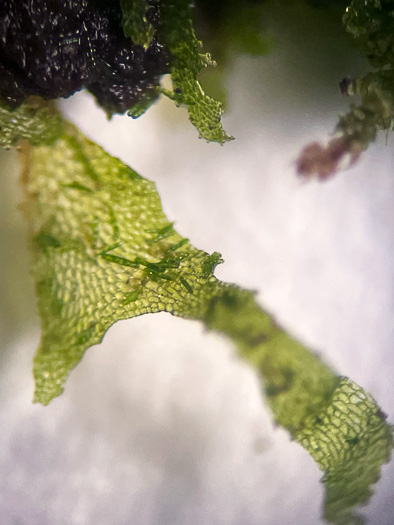Hovering over an image will enlarge it and point out features (works better on desktop than on mobile).
![]() A camera indicates there are pictures.
A camera indicates there are pictures.
![]() A speaker indicates that a botanical name is pronounced.
A speaker indicates that a botanical name is pronounced.
![]() A plus sign after a Latin name indicates that the species is further divided into varieties or subspecies.
A plus sign after a Latin name indicates that the species is further divided into varieties or subspecies.
Most habitat and range descriptions were obtained from Weakley's Flora.
Your search found 1 taxon in the family Vittariaceae, Shoestring Fern family, as understood by PLANTS National Database.

![]() Common Name:
Appalachian Shoestring Fern, "Appalachian gametophyte"
Common Name:
Appalachian Shoestring Fern, "Appalachian gametophyte"
Weakley's Flora: (4/14/23) Vittaria appalachiana FAMILY: Pteridaceae
SYNONYMOUS WITH PLANTS National Database: Vittaria appalachiana FAMILY: Vittariaceae
Vascular Flora of the Carolinas (Radford, Ahles, & Bell, 1968): Vittaria - "a branching, ribbon-like gametophyte, with diffuse rhizoids and linear-shaped gemmae only one cell wide, of the genus Vittaria" 010? FAMILY: ?
Habitat: Shaded grottoes, undersides of overhanging rock outcrops, especially in moist gorges or on spray cliffs in the vicinity of waterfalls, usually on felsic metamorphic rocks, such as mica schist, mica gneiss, granite gneiss, or metaquartzite, or on sandstone
Uncommon in Mountains, rare elsewhere
Native to the Carolinas & Georgia
Your search found 1 taxon. You are on page PAGE 1 out of 1 pages.




